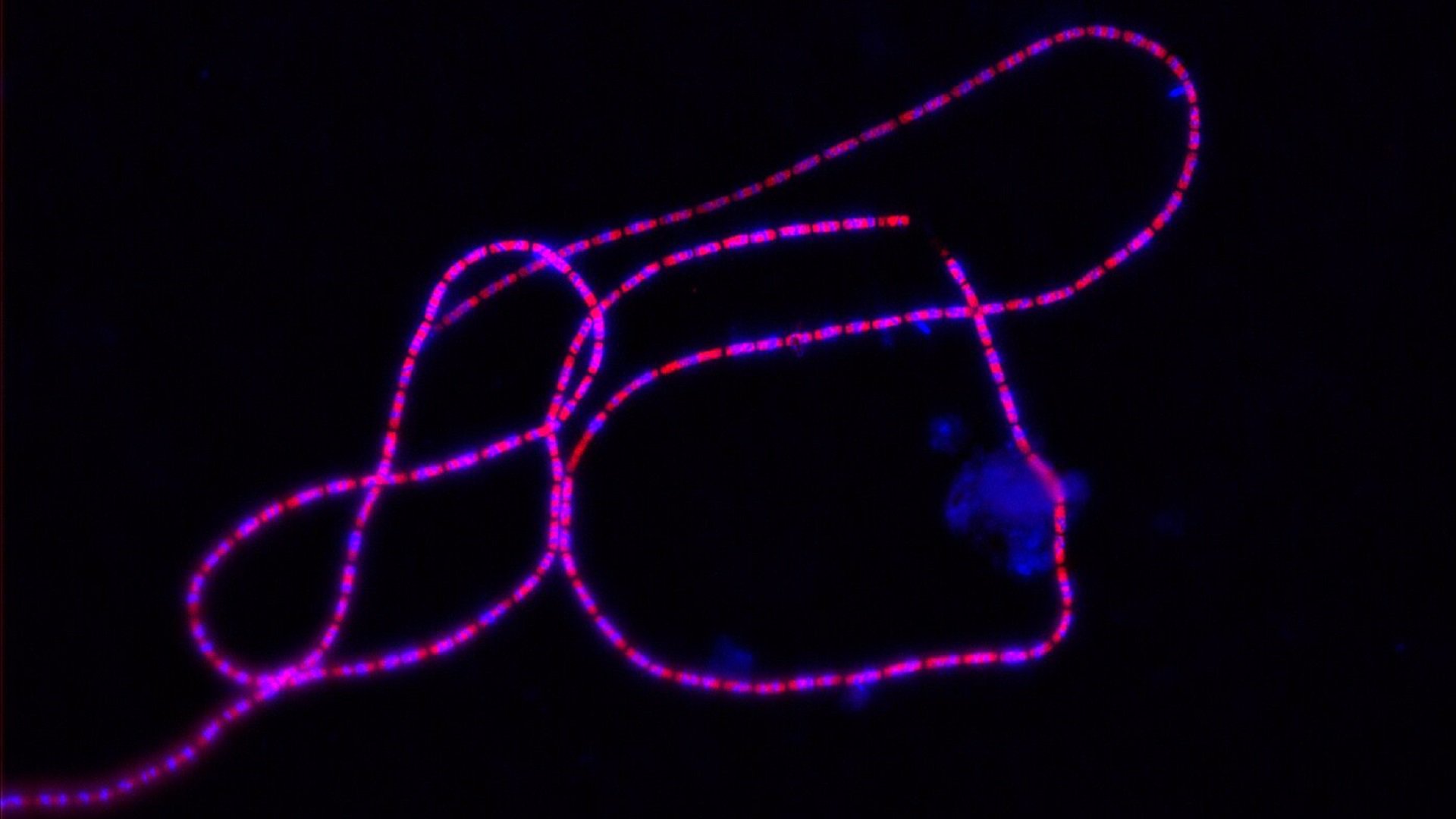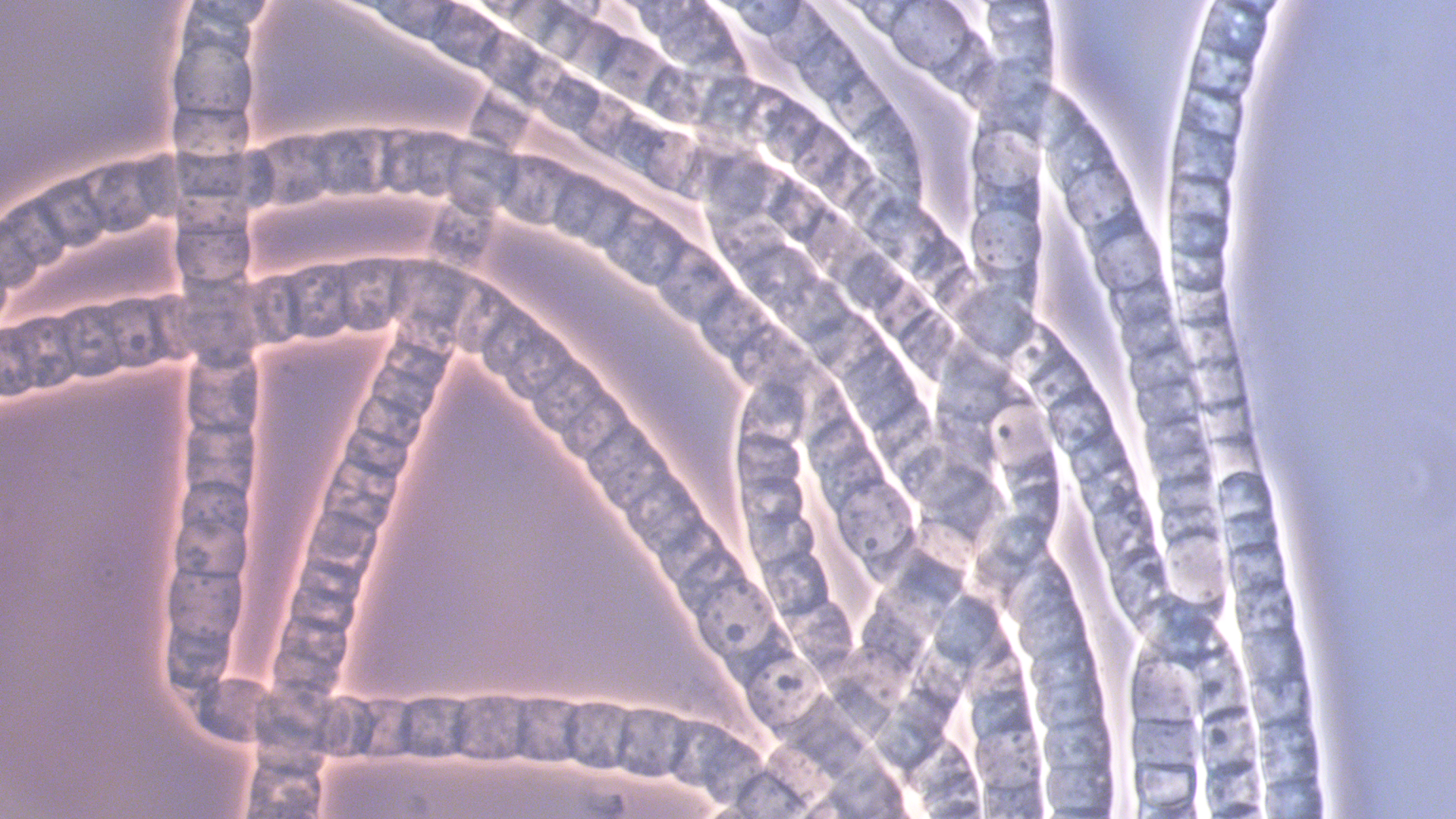These festive streamers are cable bacteria. They conduct electrical currents over distances of more than one centimetre on the seabed. It might be hard to believe, but these bacteria may one day provide the electronics in our smartphones, TVs and computers.
These festive streamers are cable bacteria. They conduct electrical currents over distances of more than one centimetre on the seabed. It might be hard to believe, but these bacteria may one day provide the electronics in our smartphones, TVs and computers.
Super conductors
Cable bacteria form long chains of up to 10,000 bacteria. These 'cables' or ‘filaments’ are a hundred times thinner than a human hair and grow up to a centimetre long. The ridges on their cells conduct electricity just as well as the most modern synthetic conductors in solar cells.
The scientific challenges
For a long time, it was believed that biological transport of electricity was limited to distances of micrometres (0.000001m). Research has now shown that some bacteria can conduct electrical currents over a distance of no less than one centimetre.

Cable bacteria were first discovered some time ago on the seafloor around Denmark. The researchers also located cable bacteria in a salt marsh in the South West of the Netherlands. It had long been assumed that cable bacteria can conduct electricity, but this couldn't be proven because cable bacteria can’t survive when exposed to air. Using a self-developed miniscule vacuum voltmeter the researchers have now managed to measure electrical currents passing through cable bacteria. It was revealed that this could happen at a distance of 10.1mm.
A charged issue
How is this electrical transport possible? Cable bacteria have ridges on the outside. Thin fibres in these ridges are able to conduct electricity. The exact mechanism of the conduction is still a mystery: biological materials are in general very bad conductors. It looks like the cable bacteria have developed a special fibrous material to become a super conductor.
Insight into these bacteria and their conductive fibres may lead to applications in technological developments. To give one example, these fibres might be used as biodegradable electrical cables and contribute to sustainable electronics. Maybe in the future our smartphones will be full of these fibres.

